No Knuckling Training Sock Pro Kit
Are you a Pet Care Professional?
Request an account
If you are an existing pet care professional, simply login.
The No-Knuckling Training Sock is a short-term training tool to enhance proprioception, designed by a rehab professional for rehab professionals. In addition, the sock’s sensory stimulation acts as a reminder for pets to lift their limb higher during gait training to prevent dragging paws and improve paw placement with repeated use.
With options for both front and back paw knuckling, the Pro Kit will allow you to choose 12 of any size front or rear training sock to use in your clinic or send home with clients.
The No-Knuckling Training Sock Pro Kit Includes:
Choose 12 of any size front or rear No-Knuckling Training Socks
- Extra Small
- Small
- Medium
- Large
- Extra Large
Benefits of the No-Knuckling Training Sock Pro Kit for
Your Patient
Your Client
Your Practice
NOTE: Replacement training socks can be purchased 50% off at any time. This kit also qualifies your practice for the Pro Series Referral Program.
Front No-Knuckling Training Sock benefits conditions such as:
Rear No-Knuckling Training Sock benefits conditions such as:
Professionals Guide to the No-Knuckling Training Sock
The No-Knuckling Sock improves proprioception in patients with neurological deficits. The sensory stimulation acts as a reminder for pets to lift their limb higher. Utilize this anti-knuckling device as a gait retraining tool for patients. The lightweight nature of neoprene is highly beneficial to patients with limb weakness.
Rehabilitation professionals may use this product as part of a treatment plan. Instruct pet owners on how to use it for at-home training sessions. There are numerous ways to incorporate the No-Knuckling Training Sock into your practice and your patient’s rehab exercises.
Here are a few suggestions to get you started:
No-Knuckling Training Sock Walks:
Apply sock to the affected limb and have the patient walk slowly for two to five minutes. If deficits are bilateral, apply to only one leg at a time to begin. You may progress to longer walks or using both hind legs simultaneously once the patient is ready for this increase.
Enhanced Cavaletti Poles:
Apply sock to the affected limb during the Cavaletti poles exercise. If a patient is still hitting bars, this will add an extra reminder to pick that foot up.
Enhanced Figure 8s or Cone Weaving:
Apply sock to the affected limb during more difficult walking exercises. The No-Knuckling Training Sock will assist in correct paw placement as you advance your workouts.
Treadmill Patterning:
Apply sock to affected limbs to greatly enhance patterning exercise using a land or underwater treadmill. During this exercise, time of use and progression is at the professional’s discretion. If used in the underwater treadmill, be sure to remove it after the workout and let the sock air-dry before subsequent use.
How does the No-Knuckling Training Sock work?
The No-Knuckling Training Sock stimulates a dog on the skin between the center two toes which evokes a withdrawal reflex which in turn causes the pet to pick the up higher. For best results wear for short 2-5 minute intervals multiple times throughout the day, at the beginning of your walk. And remove the training sock at end of exercise.
How do I know if this will help my pet?
We recommend consulting with your Veterinarian or Rehabilitation professional before using. Many geriatric pets or those suffering from neurological problems will benefit from using the No-Knuckling Training Sock.
How should I expect my pet to walk with the No-Knuckling Training Sock on?
The stimulation to your pet’s paw should cause them to pick it up higher when walking.
What if my pet won’t walk with it on?
You may need to use treats and encouragement as motivation to walk. It’s a new concept for your pet to learn and may take time.
Will it be uncomfortable for my pet?
The No-Knuckling Sock is a training tool and not designed for long term use. If used correctly it will solely stimulate your pet and not cause any irritation. For comfort make sure that fleece pad is wrapped around cord with softest part touching the paw, touch fastener side should always point away from foot.
What is the reason the Rear No-Knuckling Sock cannot be used on the front leg or the Front No-Knuckling Sock on the rear leg? Is it a medical reason?
The Rear No-Knuckling Sock is not designed for the anatomy of the dog’s front leg since the angle and use of the front leg is very different from the rear and vice versa.
Why would you suggest this item instead of or in place of another? What are the pros and cons of using this item along with or instead of the bootie splint?
The training sock is lighter weight and will train the dog to lift his/her foot or leg higher and improve knuckling. The Bootie Splint is a good product to use along with the No-Knuckling Training Sock.
Will this help with the knuckling of a dog who has DM?
Yes, it will help dogs who have been diagnosed with DM. It will encourage the pet to pick up the foot higher and be more aware of foot placement. In dogs who are in the later stages of DM, there will be less progress but it will still help by encouraging them to pick up the leg higher and as a strengthening tool.
Why do you only use this product for 2-5 minutes at a time? What if you used it for longer, say 1/2 hour? Would it hurt the dog?
This product is designed to be used as a training tool. The dog will be working harder than normal to walk, so you do not want to overexert him or her or cause any skin irritation to the toes. This product is most beneficial to the pet by using it for short, frequent applications.
How long does it take to see results?
You should see the results as soon as the dog starts wearing the product. You should see more improvement over the next week or two when the dog is not wearing the product.
This is made for short-term use, what is short term? Is it two weeks, or two months?
This product can be used for a few weeks, or a few months, depending on what your vet or rehab specialist suggests.
Are there any breeds you would not recommend this item be used with?
No, all dog breeds can use this product.
What if the dog is missing a toe? Can this item still be used?
Yes! If the dog is missing one of the middle toes, you would just put the strap around the remaining toe. Putting the strap around the outer toes is not recommended.
How do you know the fitting is correct? Should the nails/toes be 1/2″ off the ground or 1″?
The dog’s toes should not be lifted off the ground when the dog is wearing this product. If the dog is walking and the toes are not dragging then the fit is correct. If the dog is still able to drag the toes when wearing the product you will need to tighten the cord. The hock portion should be visible out of the back of the sock as shown in pictures on the website.
If the dog does not have toe nails due to dragging will this item still work?
Yes, this product is designed to help retrain the pet to lift the leg higher to help prevent scrapping of the nails.
Will this work for a dog who “does not pick up their leg?” One customer said that their dog did not have strength in their leg to pick up the foot.
If the dog is still able to use their leg, then he will be able to use this product. You can also use this product in conjunction with our Walkin’ Lift Harness or with our Walkin’ Wheels Wheelchair. As long as the dog is able to move his leg on his own, this product will be useful.

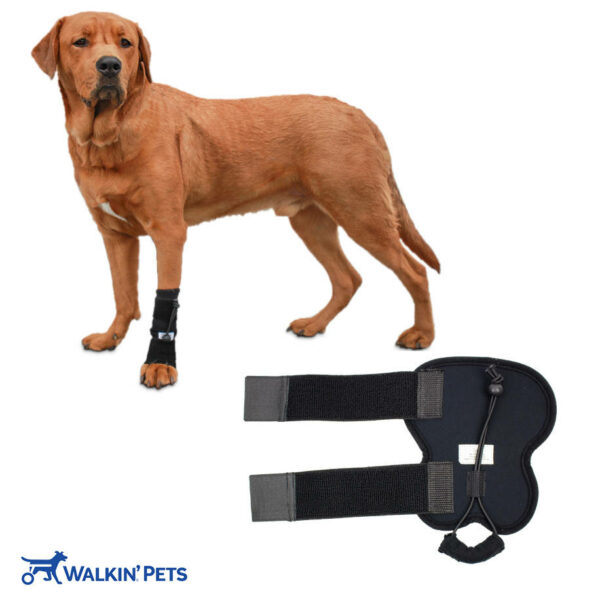
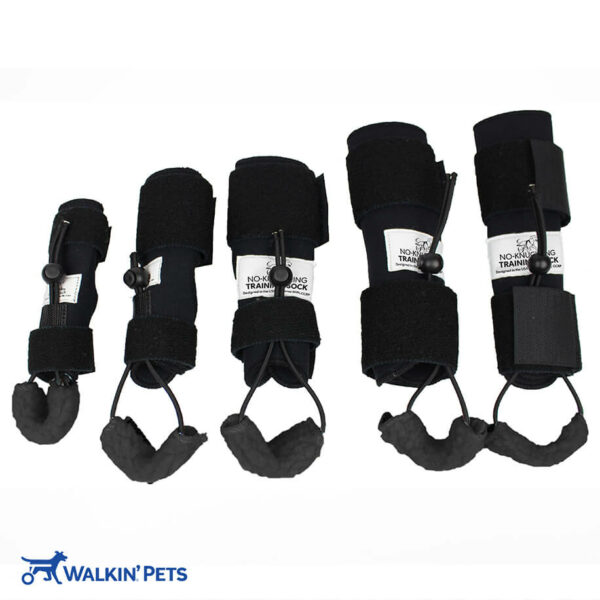
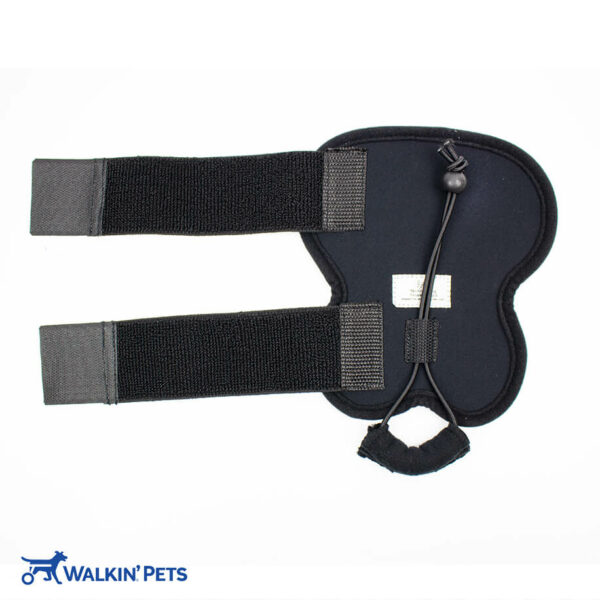
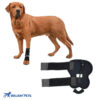
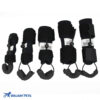
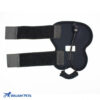
Have a question about this product?